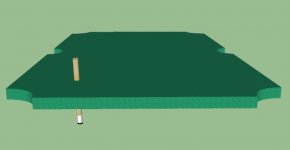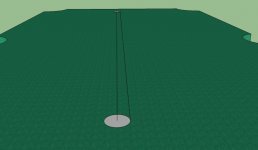Mike,
I understand and agree with your observations, sources and descriptions.
That one doesn't have to shift from the obverse CP (90) on the OB to the obverse CP (90) on the CB and just pivot is elegant, but it doesn't account for distance of the bridge to the CB, as you said earlier (I believe), when the separation between the OB and CB changes.
I contend that the shift that the "aparallel shift" CTCP that I described at post #1 to the center of the smaller appearing OB does this - compensates for the OB being further down table.
If one can master that shift, it may help one learn to pocket balls - if other methods are not yet mastered.
Thanks again for your input.
LAMas,
You are right about perspective. As the CB/OB distance grows the OB size shrinks. Your diagram noting the aparallel offset is why 90/90 works. The aiming point is on the edge to edge which is not truly a parallel line and it doesn't use a parallel offset.
You adjust using the 3 different 90 positions as the distances change. You don't need to know the OB contact point except to possibly estimate the angle. After you pivot you can see if you're close. If not, use the next 90 setup.
At 8-9 feet away you'll have a short pivot to center because of the aparallel lines, but it is still the same pivot. I use a hip pivot which is more consistent.
Thanks,
Mike




